With just three races left in the
2018 MotoGP season, Marc Marquez already has the championship in the bag. That doesn’t mean that the remaining races will be anything less than adrenaline-filled.
Australia will play host to the next race on the calendar, where the riders will battle it out at the Phillip Island Circuit against the breathtaking backdrop of Cunnigham Bay.
To get you revved up for this weekend's action, here are a few interesting facts you might not know about the thrilling world of MotoGP.

It’s all about speed
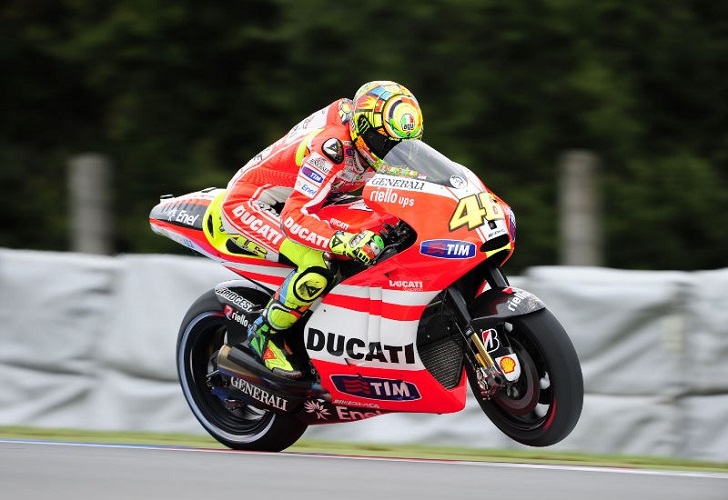 Image source: Motorcyclenews.com
Image source: Motorcyclenews.com
MotoGP bikes are fast. Seriously fast. Averaging around 174km/h around the track on race day, they are also capable of reaching 350km/h down some of the longer straights. In 2018, Andrea Dovizioso set the record for the highest speed on a MotoGP bike when he clocked 356.4km/h at the Mugello Circuit in Italy.
Racing around a track at breakneck speeds certainly gets the adrenaline pumping. The heart rate of a MotoGP rider jumps between 160bpm and 170bpm throughout the race, with some reaching as high as 200bpm when things get hairy on the track.
The smaller the rider the better
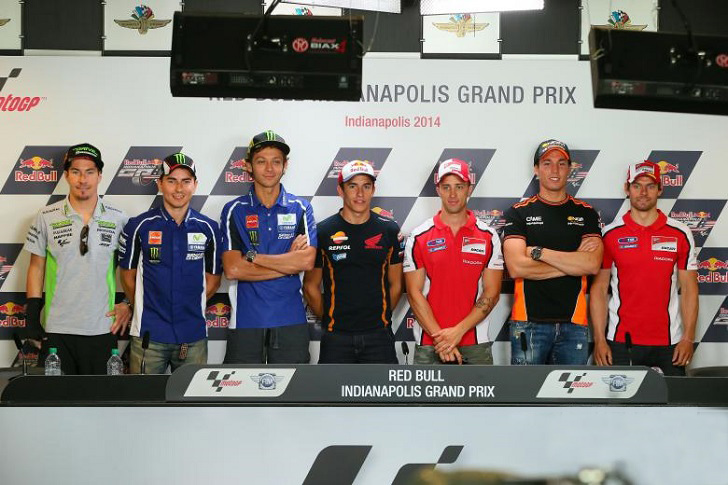 Image source: Crash.net
Image source: Crash.net
With bikes as powerful as the ones used in the MotoGP, you’d think that the weight of the rider would have no impact. But in a sport where a split-second can be the difference between winning and losing, an extra kilogram can have big consequences. Most riders stand at around 1.7m tall and weigh between 63kg and 67kg.
Standing at 1.9m tall and weighing 79kg, Loris Baz was by far the tallest and heaviest rider in the 2017 MotoGP class. His critics all claimed that he was too tall and much too heavy to be competitive, and perhaps they were right. The Frenchman's highest finish was fourth from 49 starts across three seasons. He has since moved back to the Super Bike circuit where he has had more success.
Breathing is tricky
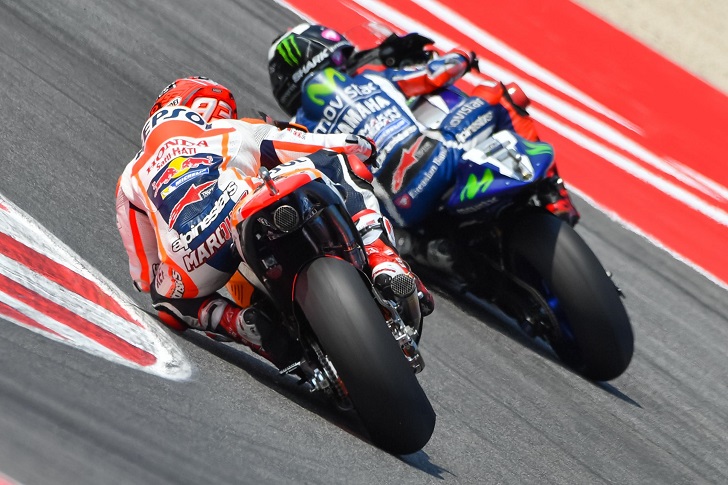 Image source: Motorsportmagazine.com
Image source: Motorsportmagazine.com
It takes a lot of concentration to maneuver a MotoGP bike around a track at 300km/h. So much so, that some riders hold their breath when entering and exiting corners and use the straights to catch their breath. British rider, Cal Crutchlow, says that breathing when you’re about to enter a corner can actually make it harder to slow down.
“Not everybody is the same but if you try and breathe in the braking zone then it is actually hard to stop the bike because you are concentrating on breathing rather than the deceleration process!”
No one knows how the ‘leg dangle’ helps
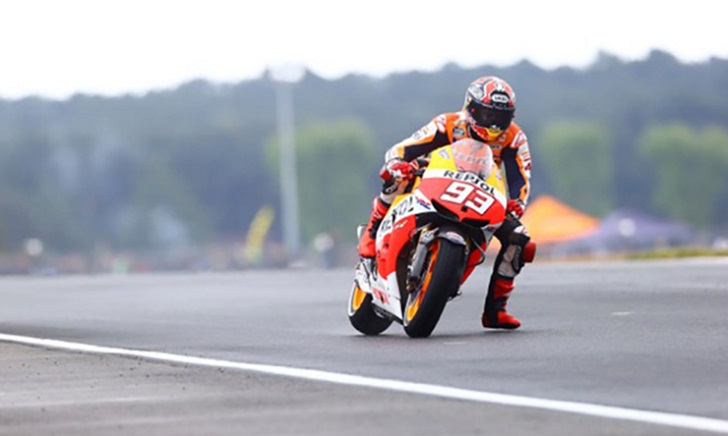 Image source: Bennetts.co.uk
Image source: Bennetts.co.uk
You may have noticed the distinct sight of the riders hanging their leg off the side of their bikes as they are about to enter a corner. But the jury is still out on the actual benefits of the move. First employed by Valentino Rossi in 2005, the ‘leg dangle’ has become a common feature among the MotoGP riders.
There are several different theories floating around - some argue that it helps balance the bike when braking at high speeds, others have said that hanging your leg off the side of the bike acts as an air-brake allowing for more effective braking. But even Rossi, the man who invented the leg dangle, can’t tell us how it helps. When asked about it, he simply said that it just felt right.
MotoGP bikes use a reverse shifting pattern
Unlike most street bikes, MotoGP bikes use a reverse-shift pattern (known as GP shifting). Where the common street bike shifting pattern is one down and five up, the GP shifting pattern is opposite i.e. one up and five down. This makes it easier (and safer) for the riders to shift up while cornering, giving them the best chance of accelerating out of the corner without upsetting the delicate balance of the bike.
The riders’ suits are made from Kangaroo leather and have airbags
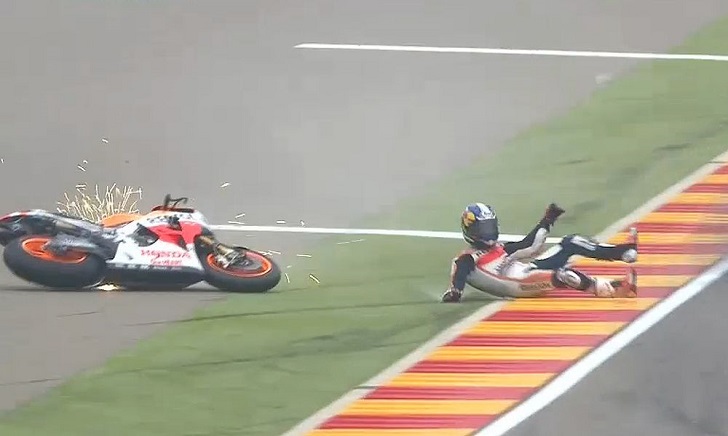 Image source: Motorcyclistsonline.com
Image source: Motorcyclistsonline.com
The leathers used by the riders are typically made from Kangaroo leather which is incredibly strong. The leathers are only 1.2 to 1.4mm thick and sit snugly on the rider, acting as a second skin. The suits also contain an airbag system that protects the rider’s upper body. When deployed, the airbag inflates to around 5cm adding an extra layer of protection.
During an average race, a rider loses up to 2 litres of sweat and 4kg of bodyweight in 45 minutes. To try and combat the loss of fluid, the riders’ helmets are equipped with a hydration system that connects to a bladder in the aerodynamic hump on the back of the suit. Normally, the bladder will only hold 200-300 milliliters of water. Too much water means too much weight, which could be the difference between winning and losing.
 The Australian Grand Prix
The Australian Grand Prix takes place this weekend and Marc Marquez will be looking to add to his unattainable points tally. Don’t miss your chance to bet on the action.
Don't have an account? No problem.
Sign up today and take advantage of our incredible Welcome Offer. Get a 50% first deposit bonus up to NGN 20,000.
For all the latest sports news, betting tips and promotions, follow
Betway Nigeria on
Facebook,
Twitter,
Instagram,
Google+ and
YouTube.
Download the Betway App.